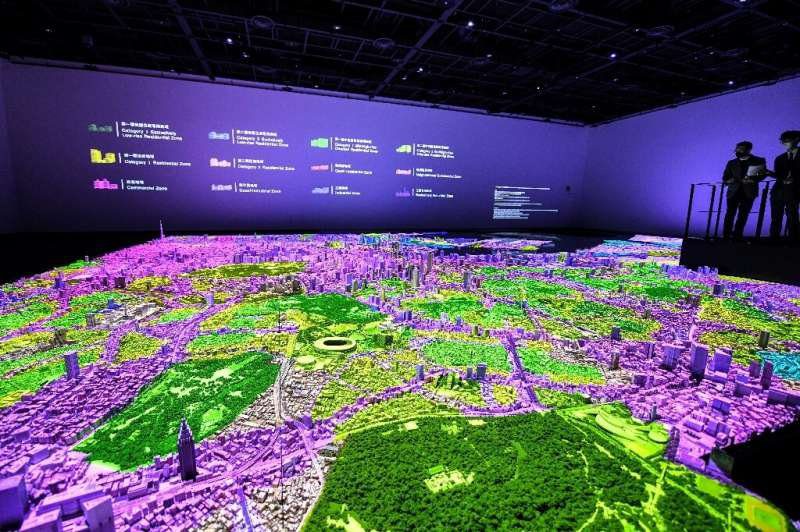By associating a 3-D model with projection mapping, the UrbanLab at the Mori Building in Tokyo aims to display information about the Japanese capital in different and visually appealing ways.
“Usually we can't get the whole picture of the city from a bird's eye view, but by looking at its twin we can see how attractive Tokyo and its challenges are,” he says Shinji Takeda, senior manager of Mori Building.
Launched in 2019, the project spanning 13 of Tokyo's 23 boroughs aims to help researchers and private developers think about the city.
A twin city to be embraced with the gaze
Visitors can spot the landmarks of the city. There are of course the red and white Tokyo Tower, and the endless condominiums with ultra-precise three-dimensional details. Everything faithfully replicates a sprawling agglomeration of 230 square kilometers (90 square miles).
The mapping of the projection on the top of the 1: 1000 twin city offers a variety of information. For example, how railways intersect with the physical landscape and where businesses, or residential areas, are concentrated.
Projections of the road and rail network highlight the relatively underdeveloped parts of the megacity, while other visual information describes Tokyo's various vulnerabilities.

A twin city to fully understand urban dynamics
I recently told you about the virtual twins. A concept being studied by many companies and local entities which aims to replicate an entire city in digital form, to intervene on the "copy" and experiment with solutions before adopting them in reality.
This twin Tokyo is a bit like the analogue version of a virtual twin city. In a different, less detailed but very interactive way, there is a lot of information available to visitors, and many opportunities to understand the city.
For example, the mapping on the model with altitudes and sea levels shows which areas are prone to flooding from rivers, canals and the sea. Given Japan's vulnerability to earthquakes and typhoons, understanding these phenomena is critical.
Takeda cites the example of a massive 2019 typhoon that caused significant flooding along Tokyo's Tama River. “We saw the importance of learning how the city developed in terms of terrain and which areas are most vulnerable in case of heavy rains,” he said.
In this structure, you can see not only how earthquakes, but also a number of other problems affect a disaster-prone Tokyo.
Tokyo is often seen as booming and fast developing, without a particular plan, in part because seismic requirements are regularly updated and buildings are overhauled to meet the new rules.
The twin (and with her the exhibition) grows in parallel with the city

The exhibition, as mentioned, is a resounding success. It will continue to change with the city, updating each year to reflect the loss of old buildings and the appearance of new ones. “Tokyo continues to grow,” says Takeda. “It's not a city where visitors simply see history as if they were reading an old textbook.
It keeps changing and growing every day, and this is another element of the city that people can enjoy.



